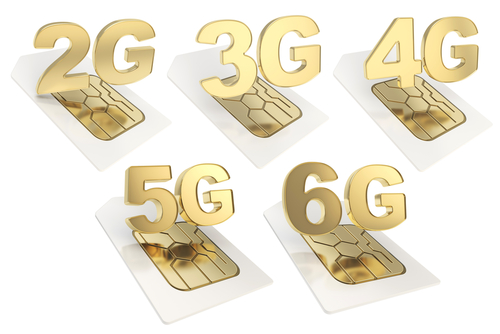The rollout of 4G, and the development of 5G services, has led to a perception that network innovation is moving at such a rate that always connected, superfast internet will soon be the ‘norm’. What is often underestimated, however, is what’s needed to get to this stage.
Innovation into advanced mobile services, such as 4G and 5G, is all well and good, but it cannot be at the expense of 2G and 3G networks. These provide the most basic – yet crucial – phone services to customers and therefore can’t afford network downtime or outages.
At a time when the future of networking seems so close, the existing telecoms service will be under the microscope from consumers, and operators must deliver a reliable network now, if they are to secure adoption in 4G and 5G networks going forward.
Customer dissatisfaction
2G and 3G networks are the backbone of the telecoms infrastructure; customers expect to make calls, text and access mobile internet at the touch of a button. This level of service is yet to be achieved across the board, however, and lofty ambitions of high-speed 4G and 5G internet are a far cry from the actual experience being had by some customers.
There have been repeated reports of lost data services, poor call connectivity and the failure to send text messages. Mobile operator, EE, for example, recently issued an apology to its customers who experienced an outage of this kind for several hours. Network downtime at this stage in the game is particularly concerning, especially given that throwing more data intensive services into the mix – such as 4G and 5G – will only add pressure to the network.
>See also: Leading the 5G charge
In fact, 2G and 3G network problems may be caused by the focus on 4G. As operators scramble to be the first to deliver top quality 4G and 5G services, investment and attention is being drawn away from the day-to-day maintenance and repairs of existing networks. This is a dangerous game being played by operators, given that it will be the adoption of 4G and 5G services by existing customers, that will make the investment worthwhile in the first place.
Poor network service will undoubtedly impact customer confidence in operator capabilities, and predictions of a superfast network may be written off as an empty promise.
This can be seen in Ofcom’s latest customer feedback report, for example, where overall satisfaction of landline, broadband, mobile and pay TV providers is much lower than expected. In particular, customers were unimpressed with 2G and 3G network performance.
It seemed that operators often mistook customer retention as happiness and this is indicative of the issues they are facing with next generation networks. If consumers are unhappy with the network service but aren’t moving because of limited alternatives, 4G may be the turning factor.
Rather than wait for current providers – where the existing service is poor – to offer 4G, customers will turn to those who are offering it now. Essentially, the poor 2G and 3G service currently on offer, means that little loyalty has been generated, and this is a problem for operators. As proven by a recent report from Nokia, where half of customers are ready to ditch their operator over network issues.
The digital divide
Advanced mobile services are great for those in the cities with the supporting infrastructure, but for those in more rural and remote communities, poor maintenance of 2G and 3G services may mean even worse communication channels, as improving existing services are put on a back burner.
With this in mind, the current 4G expenditure in the telecoms market may, in fact, only serve to increase social exclusion, as rural communities are left even further behind in terms of network connectivity.
This is despite the UK Government’s Digital Inclusion Strategy, which pledges to invest in internet access and the digital infrastructure. With the report suggesting that ‘access’ is one of the main reasons social exclusion even exists, mobile operators must take more responsibility and address the scope of internet access, by providing a more reliable service to everyone, before focusing on newer technologies such as 4G and 5G, which are currently only viable in the already well-connected towns and cities.
Operators must solve the UK-wide disparity in connectivity, if the introduction of 4G and 5G is to be welcomed. There are a number of mobile operators that are beginning to invest in repairing and maintaining existing network infrastructures, with particular attention being paid to rural areas. O2, for example, recently announced that it is investing £1.5 million a day upgrading its 2G and 3G networks to give customers extra coverage, capacity and capability.
The company will also tackle the digital divide by adding an additional £16 million to bringing 3G data to 200 communities, which have never been able to receive mobile data services at all. In other cases, Ofcom is stepping in and, thanks to its recent ruling, Openreach is now required to repair network faults within two working days.
Maintaining success
Without maintaining, supporting and developing 2G and 3G infrastructures adequately, the impact will be two fold – service levels will undoubtedly slump and end users will see connectivity worsen, far from the ‘always connected’ messaging propagated by those investing in 4G and 5G services. Consumers need to buy into the promise of next-generation networking, but with existing networks failing to live up to standards, this is a tough ask from operators.
Simply put, until the telecoms industry takes responsibility and invests to improve the experience of its entire customer base, poor service with risks of outages will be inevitable, and we will be even further away from achieving the reliable, quality service that should be commonplace in this day and age. We welcome 4G, but let’s build on rock solid 2G and 3G foundations.
Sourced from Askar Sheibani, CEO and founder of Comtek







